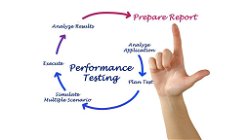Transforming Workplace Communication: Strategies for Effective Collaboration and Productivity
Vikash Jain
. 3 min read
When an employee left the office in the past, they were cut off from any further information regarding the activities that took place at their place of employment. Communication at work and when we leave work has been fundamentally transformed as a result of technological advancements in office communication systems. Connectivity and technological advancements are necessities for today's workforce. So, as technology continues to advance, embracing online chat as a means of communication is vital for organizations to keep pace with the evolving needs and expectations of their workforce.
.jpg)
Wat Exactly does it mean to Communicate Effectively?
The process of exchanging or transmitting ideas, information, thoughts, knowledge, data, opinion, or messages from the sender to the receiver with a purpose that can be understood with clarity is the definition of effective communication. This process can take place from the sender through a method or channel of the sender's choosing. The process of effective communication results in contentment on the part of both the sender and the receiver.
Increase the variety of your channels
When it comes to communication, you shouldn't put all of your efforts into just one method. In other words, you should use a variety of different channels to communicate with people. The reason for this is that different formats are more suitable for various kinds of messages.
For Example:- Slack is typically the platform that proves to be the most effective when it comes to asking quick questions or sharing information with a large group. On the other hand, it is possible that a face-to-face meeting or a call via video conferencing would make more sense for topics that require a more in-depth discussion.
Importance of Effective Communication in the Working Environment
Communication is an essential skill for employees to possess in the workplace because it is very important for businesses to operate effectively and be productive. If employees communicate both up and down the communication chain in their company, they may experience improved morale as well as increased levels of productivity and commitment. When a leader invests time and effort into opening up lines of communication, they will quickly earn the trust of their team members.
Maintain an open-door policy because it helps to establish trust
A precedent is established by having an open-door policy in place, which states that anyone can ask questions, voice concerns, or pitch ideas at any time. This is an essential step in establishing trust among the members of your team. When management is difficult to reach, it communicates to lower-level employees that their contributions are not as valuable as those of management.
How to Communicate Effectively Within Your Place of Employment?
Communication that is both precise and efficient is the cornerstone of professional achievement. It serves as the foundation for each and every email, presentation, and gathering. Anxiety can develop if you have trouble interacting with other people at work, such as your boss, your coworkers, or your colleagues, and this can have a negative impact on your work. But you'll have great communication skills for the rest of your career if you use your words effectively.
Develop a Friendly and Open Atmosphere
You need to make sure that the members of your team are comfortable enough to come to you when they have a problem, made a mistake, or have a question in order to open the lines of communication. We've all heard the expression "My door is always open," but keeping that promise can be challenging when members of your team are located in different parts of the world. They might reveal some things to you that they previously hid from the group because they didn't feel comfortable discussing them in that setting.
Fosters Positive Relationships with Coworkers
Positive working relationships can be developed through the use of in-person, professional communication within a team setting. Nevertheless, in an environment with distributed teams, ineffective communication can deteriorate working relationships. This is due to a lack of consistency, communication, and appreciation on all parties involved. In a scenario like this one, businesses have an obligation to make use of the various digital communication tools available in order to maintain the cohesiveness and connection of their teams.
Conclusion
In conclusion, effective communication is crucial for the success of any workplace, especially in today's technologically advanced world. Using a variety of communication channels and maintaining an open-door policy can establish trust and improve morale among team members. Creating a friendly and open atmosphere can also foster positive relationships with coworkers, even in distributed team environments. Employers and employees alike must prioritize developing and honing their communication skills to operate effectively and productively in the workplace.
More Stories from
Factors to Consider When Purchasing a Motorcycle: A Comprehensive Guide
This article provides insights and tips on factors to consider when purchasing a motorcycle.
Editors' Choice for 2023: Top Pickup Trucks for Any Job
The article discusses how modern pickup trucks have evolved to become more than just workhorses with luxurious features.
Unlocking Business Growth: Harness the Power of Web Solutions
Embrace the power of the internet to unlock your business's true potential and propel it towards unprecedented growth.
Embracing the Remote Work Revolution: Pros and Cons for Businesses and Employees
This article explores the significant growth of remote work over the past decade, driven by technological advancements and changing work cultures.
A Comprehensive Guide to Performance Testing: Stages, Metrics, and Tools
It explores the importance of performance testing in the development lifecycle, the types of performance testing, and the metrics used to measure performance.









.png?width=40&aspect_ratio=1:1)
.png?width=40&aspect_ratio=1:1)

